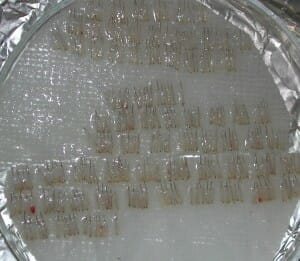Our skin is the largest organ we have. It acts as a barrier between your surrounding environment and your internal organs. Our skin is the first line of defence from the outside world and is constantly bombarded with various irritants in the environment such as dust, bacteria, and the effects of weather. Many people suffer from sensitive skin and one of the most notable and common issues with our skin is eczema. Eczema is inflammation of the skin usually due to dryness, irritation, and possible allergy.
The ”Mayo Clinic Regime” is a guideline for sensitive skin for people suffering from eczema:
YES:
SOAPS – Use products that are soft and non-irritating to the skin. This may take some trial and error to find the perfect soap for you.
Use unscented laundry detergents.
Wash all new clothes and linens five times before using
White cotton gloves under vinyl or nitrile gloves for any activities where you anticipate your hands getting wet. Trim nails short or wear white cotton gloves full time. Long nails are dangerous weapons to the skin.
NO:
No HOT water (use lukewarm only). Hot water can cause major irritation to the skin.
No powders, rubbing alcohol, perfumes, colognes, after shave, or pre-shaves on any part of the body or clothing.
No fabric softener in the washer or dryer. White vinegar in the rinse cycle of the water is okay.
No scented deodorants.
No rubber or vinyl gloves without cotton gloves beneath them.
No wetting of hands more than five times per day, unless instructed, and if so, appropriate creams/lotions on afterwards.
No tight-fitting clothes.
Do not scratch, scrub, or pull off dead skin, and do not use a loofah.
Cream Schedule
Apply at morning and bedtime:
- Plain moisturizer generously to all dry skin (And anytime skin feels dry). Ideally applying to moist skin, as it “traps” the moisture. After a brief bath or shower, pat dry and apply the cream.
As eczema improves, decrease the use of any prescription hydrocortisones or mixture creams. However, always use plain moisturizer at least once or twice daily on all sensitive skin.
These are some tips to help those suffering from eczema. Always check with your dermatologist for more care and management of eczema/dermatitis or any other skin ailments you may have.


 Once the removal of the donor hair, Dr. Nakatsui then anaesthetizes the recipient areas. He then makes tiny incisions into the recipient areas. Dr. Nakatsui’s team of technicians carefully and skilfully trim and dissect every individual graft. A graft is a bundle of 1, 2, or 3 hairs. Once all of the incisions are made, Dr. Nakatsui, his team, and the patient break for a quick lunch provided by Dr. Nakatsui.
Once the removal of the donor hair, Dr. Nakatsui then anaesthetizes the recipient areas. He then makes tiny incisions into the recipient areas. Dr. Nakatsui’s team of technicians carefully and skilfully trim and dissect every individual graft. A graft is a bundle of 1, 2, or 3 hairs. Once all of the incisions are made, Dr. Nakatsui, his team, and the patient break for a quick lunch provided by Dr. Nakatsui.

